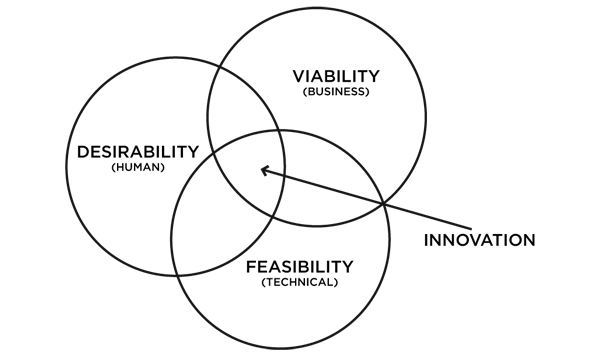Some design is just bad. Doors that you can’t tell if they push or pull to open, microwave oven buttons, the Ford Pinto, the list goes on and on. Bad design is easy to spot and often easy to fix, but some design is really good and still fails…why??? Many companies have learned that that having the best products isn’t enough; today it is all about the end-to-end experience. Delivering exceptional experiences should become the mantra of business architects everywhere and the best way to do this is to partner with a group already skilled at doing this: User Experience (UX) designers. In this installment of Lessons from the Field, I would like to demonstrate how business architects, working closely with UX designers, can help deliver exceptional experiences.
Exceptional Experiences
So, what makes an experience exceptional? This of course varies from person to person, but here are some common examples:
- Awe-inducing: walking away from an experience in total awe of what just happened; e.g. the first time you experienced virtual reality. These experiences create lasting memories.
- Empathy: working with someone who is empathetic to your situation; e.g. a customer service agent who really cares. These types of experiences build brand loyalty.
- Frictionless: streamlining a normally complex process; e.g. CLEAR and TSA Pre✓®at the airport significantly simplify the process of getting to your plane.
- The red-carpet treatment: being treated in a way that makes you feel special and important; e.g. being picked up by a limousine.
- There are plenty of other examples, but they all tend to result in having our expectations exceeded.
Desirability, Viability, and Feasibility
Next let’s look at how we can help ensure we are delivering exceptional experiences. One of the models originating from design thinking pioneers like IDEO is the idea that the sweet spot for innovation can be found at the overlap between desirability, viability, and feasibility. Several years ago, business architect Mike Clark enhanced this model in the article Bridging the Gap, describing the benefits of bringing design into architecture.
To use this model when evaluating a solution, here are the types of questions to be asked:

Desirability
- Do they want this?
- Are we solving a real problem?
- Are we solving the right problem?
- Does it delight the user?
Viability
- Should we do this?
- Does it make business sense?
- Does it contribute to long-term growth?
- What is the return on investment?
- Will people pay for it?
Feasibility
- Can we do this?
- Is it technically feasible and supportable?
- Do we have the right capabilities to build and sustain this?
- Do we have the right people to do this?
I would like to extend this model beyond innovation and assert that exceptional experiences are made or destroyed at the intersections between viability, feasibility and desirability. Who at your organization is focused on these intersections? The business clearly is focused on ensuring the short and long-term viability of the business, information technology and engineering teams are focused on the feasibility of proposed solutions, and now UX designers are focused on delivering great user experiences. Business architects can play the key role of focusing on these intersections and collaboratively driving their organizations toward solutions that make business sense, delight the user, and are technically feasible and supportable.
Tactics
Here are some tactics business architects can use.
Desirability
The most important tactic to ensure desirability is to talk to the user. Getting out in the field and talking with the actual future users of a solution is the key to building something that people actually want. User stories, sentiment analysis, and prototyping are other common tools that will help. Also make sure that there is some element of a wow factor to help differentiate from what is commonplace. Finally, don’t take the wow factor too far. Keep it simple: users are more attracted to simple and prototypical designs that keep them close to their comfort zone.
Viability
This is a sweet spot for business architects. Using the Business Model Canvas to document current and target business models, and analyzing the gaps and changes required, is a great way to examine viability. Partner closely with the business to ensure that market demand, competitive analysis, cost structures, revenue streams, and distribution channels are accurate and well vetted. Finally, balance perfection with completion. Getting a Minimum Viable Product (MVP) out the door may be critical to establishing a foothold in a competitive marketplace, so help to establish clear timelines that are understood across teams.
Feasibility
Capability maturity assessments can help here. Do you have the capabilities you need? How mature are they? Do you have the right people, processes, data, and technology? It is also critical to analyze the funding model to ensure that there are enough funds in the right places across your organization to make it successful.
Beyond focusing on the intersection of desirability, viability, and feasibility, business architects and UX designers can also drive value by being a bridge across functional silos, bringing a strategic, enterprise viewpoint and a focus on delivering interconnected end-to-end experiences. Maintaining a laser focus on assuring delivery of the desired business outcomes, not just the project deliverables, is another key role architect can play across the lifecycle of a project or product.
Conclusion
Business Architects and UX Designers unite! Delivering an exceptional client experience over the course of an end-to-end journey is essential to win in today’s competitive marketplaces. Business Architects and UX Designers are uniquely skilled to collaboratively drive their organizations toward solutions that make business sense, delight the user, and are technically feasible and supportable.

















